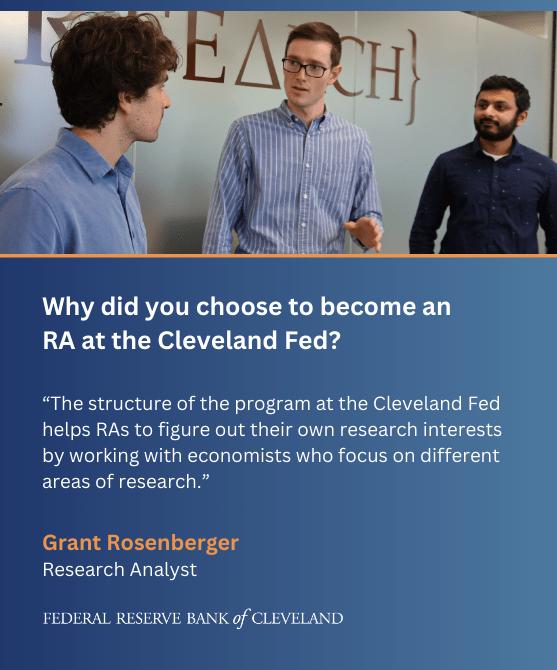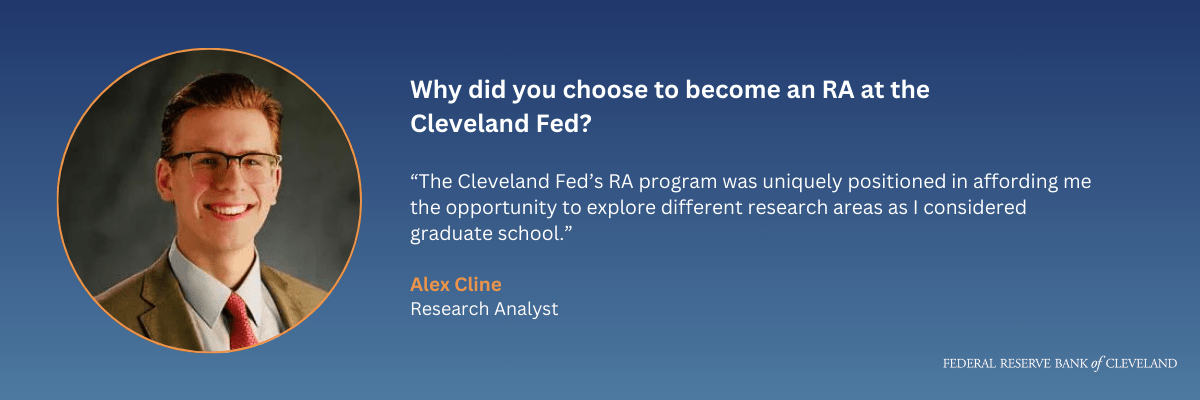- Share
Research Analysts
Receive a notification that we are recruiting
If you would like to be notified when research analyst job openings are posted, please complete this form.

What's it like to live and work in Cleveland?
You can live close to work! Cleveland has a variety of downtown housing, dining, and entertainment options and several attractive near-by neighborhoods.
Cleveland is more affordable and has less traffic than bigger cities. It’s easy to get around and commute from the suburbs.
There's plenty to do and explore, including a network of regional parks that connects to a national park, a free world class art museum, an internationally renowned orchestra, a large theater district, three major league sports teams, the Rock & Roll Hall of Fame, and much more. Get more information at thisiscleveland.com.
Panel discussion: Perspectives on careers in economics
Watch RAs and economists discuss their perspective on careers in economics during our recent Economic Scholars Program panel discussion.



